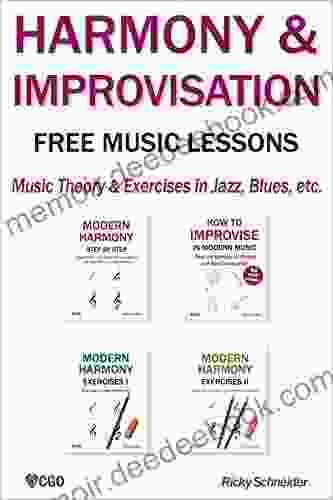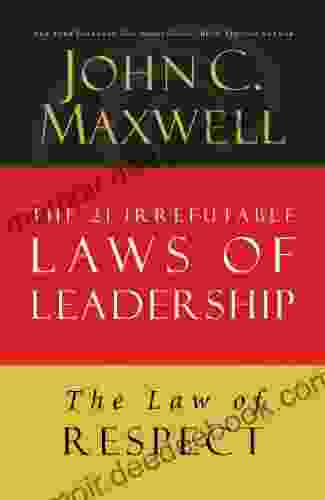Immerse Yourself in the Enchanting World of Music Theory Exercises for Jazz, Blues, and Beyond


Embark on a captivating journey through the intricate landscape of music theory exercises, where you'll delve into the nuances of jazz, blues, and other captivating musical styles. Discover the fundamental principles that underpin these genres, unlocking a deeper understanding of their melodies, harmonies, and rhythms.
4.3 out of 5
| Language | : | English |
| File size | : | 5631 KB |
| Text-to-Speech | : | Enabled |
| Enhanced typesetting | : | Enabled |
| Word Wise | : | Enabled |
| Print length | : | 52 pages |
| Lending | : | Enabled |
| Screen Reader | : | Supported |
Laying the Foundation: Essential Concepts
Before we dive into the practical exercises, let's establish a solid foundation by exploring some key music theory concepts.
Scales and Chords
Scales are the building blocks of music, providing the basic framework for melodies. Jazz and blues commonly employ specific scales such as the major scale, minor scale, pentatonic scale, and blues scale. Chords, on the other hand, are harmonious structures that accompany melodies, adding depth and richness to the music.
Intervals and Melody
Intervals refer to the distance between two notes. Understanding intervals is crucial for constructing melodies that are pleasing to the ear. Jazz and blues melodies often feature characteristic intervals such as the major second, minor third, and tritone.
Rhythm and Time Signatures
Rhythm is the backbone of music, governing the flow of beats and subdivisions. Time signatures indicate the number of beats per measure and the type of note that receives one beat. Jazz and blues are characterized by lively syncopated rhythms and unconventional time signatures such as 4/4, 3/4, and 6/8.
Jazz Theory Exercises: Embracing Improvisation
Jazz is renowned for its improvisational nature. Here are some exercises to refine your jazz improvisation skills:
1. Scale-Based Improvisation:
- Choose a specific scale (e.g., major scale).
- Play the scale ascending and descending.
- Experiment with different rhythmic patterns and embellishments.
2. Chord-Based Improvisation:
- Select a chord progression (e.g., ii-V-I).
- Identify the notes that make up each chord.
- Improvise melodies that harmonize with the chords.
3. Bebop Scales:
- Learn bebop scales, which are extended scales with chromatic alterations.
- Use these scales to add sophistication to your improvisations.
- Experiment with different fingerings and articulations.
4. Rhythm Changes:
- Study the chord progression "Rhythm Changes."
- Improvise melodies over this challenging progression.
- Work on developing a strong sense of time and syncopation.
Blues Theory Exercises: Cultivating Expression
Blues music is steeped in emotion and improvisation. Here are some exercises to enhance your blues playing:
1. Blues Scales:
- Practice the major blues scale and minor blues scale.
- Play these scales over blues chord progressions.
- Experiment with different bends and slides.
2. Chord Voicings and Inversions:
- Experiment with different chord voicings and inversions.
- Learn about triads, seventh chords, and extended chords.
- Apply these voicings to blues progressions.
3. Turnarounds:
- Study common blues turnarounds, such as the I-IV-V turnaround.
- Practice improvising over these turnarounds.
- Experiment with different rhythmic variations.
4. Twelve-Bar Blues:
- Familiarize yourself with the twelve-bar blues form.
- Compose and improvise blues solos over this form.
- Work on developing your storytelling abilities through your improvisations.
Other Music Theory Exercises: Exploring Diverse Styles
Jazz and blues are only two examples of the vast world of music theory. Here are some exercises to delve into other styles:
1. Classical Harmony:
- Study classical harmony textbooks.
- Analyze the harmonic progressions found in classical music.
- Learn about counterpoint and voice leading.
2. Functional Harmony:
- Understand the concept of functional harmony.
- Identify the function of chords within a progression.
- Use functional harmony to create chord progressions with strong melodic and harmonic movement.
3. Modal Theory:
- Learn about different musical modes.
- Compose melodies and chord progressions based on modes.
- Explore the unique characteristics of each mode.
: Embracing the Journey of Mastery
Music theory exercises are not merely a collection of academic exercises, but a dynamic toolkit for musicians seeking to deepen their musical understanding and expand their creative horizons. Whether you're a jazz aficionado, a blues enthusiast, or an aspiring composer, embarking on this journey of musical exploration will unlock new doors to creativity and enhance your appreciation for the intricate tapestry of music.
Remember, mastery is a continuous pursuit. Dedicate yourself to regular practice, experiment with different exercises, and seek guidance from experienced musicians and educators. By embracing the challenges and reveling in the discoveries along the way, you'll transform your musical journey into an exhilarating symphony of knowledge, skill, and artistic expression.
4.3 out of 5
| Language | : | English |
| File size | : | 5631 KB |
| Text-to-Speech | : | Enabled |
| Enhanced typesetting | : | Enabled |
| Word Wise | : | Enabled |
| Print length | : | 52 pages |
| Lending | : | Enabled |
| Screen Reader | : | Supported |
Do you want to contribute by writing guest posts on this blog?
Please contact us and send us a resume of previous articles that you have written.
 Book
Book Page
Page Chapter
Chapter Text
Text Story
Story Genre
Genre Library
Library Paperback
Paperback E-book
E-book Magazine
Magazine Newspaper
Newspaper Bookmark
Bookmark Shelf
Shelf Glossary
Glossary Foreword
Foreword Synopsis
Synopsis Scroll
Scroll Tome
Tome Classics
Classics Library card
Library card Narrative
Narrative Autobiography
Autobiography Reference
Reference Narrator
Narrator Resolution
Resolution Librarian
Librarian Catalog
Catalog Borrowing
Borrowing Lending
Lending Reserve
Reserve Academic
Academic Journals
Journals Reading Room
Reading Room Special Collections
Special Collections Literacy
Literacy Study Group
Study Group Dissertation
Dissertation Storytelling
Storytelling Awards
Awards Textbooks
Textbooks Rupert Smith
Rupert Smith Katherine Buckley
Katherine Buckley J S Wood
J S Wood Kristen Gula
Kristen Gula Heather Andrea Williams
Heather Andrea Williams Gail Green
Gail Green George Wallace
George Wallace Randi Minetor
Randi Minetor Richard Miniter
Richard Miniter Peter Moulton
Peter Moulton Kristy Marie
Kristy Marie Ronald E Shaw
Ronald E Shaw Raymond Queneau
Raymond Queneau John C Maxwell
John C Maxwell Harold Pratt
Harold Pratt Tarell Alvin Mccraney
Tarell Alvin Mccraney Jessica Trisko Darden
Jessica Trisko Darden Notes On Cities
Notes On Cities T Rae Mitchell
T Rae Mitchell Beau Keyte
Beau Keyte
Light bulbAdvertise smarter! Our strategic ad space ensures maximum exposure. Reserve your spot today!

 Langston HughesProject Management for Engineering Professionals: A Comprehensive Guide to...
Langston HughesProject Management for Engineering Professionals: A Comprehensive Guide to... Kirk HayesFollow ·16.3k
Kirk HayesFollow ·16.3k Austin FordFollow ·9.6k
Austin FordFollow ·9.6k Carson BlairFollow ·8.1k
Carson BlairFollow ·8.1k Roger TurnerFollow ·6.3k
Roger TurnerFollow ·6.3k Esteban CoxFollow ·11.2k
Esteban CoxFollow ·11.2k Aubrey BlairFollow ·13.8k
Aubrey BlairFollow ·13.8k Brady MitchellFollow ·15.8k
Brady MitchellFollow ·15.8k Jermaine PowellFollow ·19.9k
Jermaine PowellFollow ·19.9k

 Vernon Blair
Vernon BlairHow to Get a Woman to Pay for You: A Comprehensive Guide...
In the modern dating...

 Levi Powell
Levi PowellPrinciples and Theory for Data Mining and Machine...
Data mining and machine learning are two...

 Andrew Bell
Andrew BellMirrors For The Mind: Milestones In Discovery And...
Mirrors have been a part of human history...

 Alec Hayes
Alec HayesDelving into Natural Language Processing with Java and...
Natural Language Processing (NLP) is an...
4.3 out of 5
| Language | : | English |
| File size | : | 5631 KB |
| Text-to-Speech | : | Enabled |
| Enhanced typesetting | : | Enabled |
| Word Wise | : | Enabled |
| Print length | : | 52 pages |
| Lending | : | Enabled |
| Screen Reader | : | Supported |














